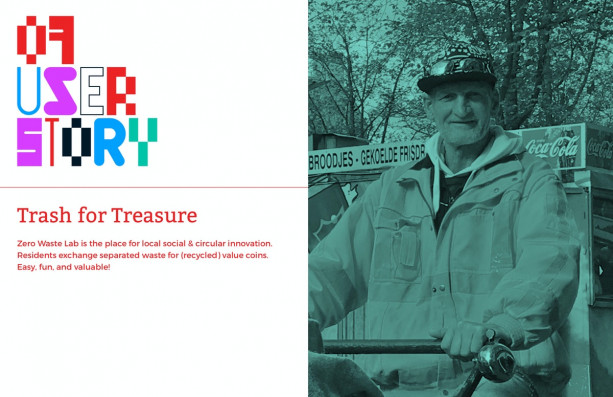Stay in the know on all smart updates of your favorite topics.
Moving from a linear to a circular economy means minimising the waste and pollution by reducing, recycling and reusing. The City of Amsterdam aims to redesign twenty product- or material chains. The implementation of material reuse strategies has the potential to create a value of €85 million per year within the construction sector and €150 million per year with more efficient organic residual streams. Amsterdam set up an innovation program on the circular economy; www.amsterdamsmartcity.com/circularamsterdam. By converting waste into electricity, urban heating and construction materials, the Amsterdam Electricity Company generates 900 kWh per 1000 kg of waste. 75% of the sewage system is separated for waste and rain water and the silt which remains after treating waste water is converted into natural gas. Share your innovative concepts and ideas on circular economy here.
AMS institute: Circular City research programme

To establish healthy and regenerative resource flows that retain or increase value in cities’ subsystems, there is dire need for new concepts as well as rigorous and critical testing of existing ones: both at an academic and practical level.
Introduction
To establish healthy and regenerative resource flows that retain or increase value in cities’ subsystems, there is dire need for new concepts as well as rigorous and critical testing of existing ones: both at an academic and practical level. This relates to e.g. aligning & connecting flows, exploring shared value models, implementing smart sensing technologies, identifying displacement effects etc. The impact on how cities are conceived, materialized and operationalized in a circular framework can hardly be overstated. Some impacts can be imagined, based on current knowledge, but most can at best be anticipated. This is due to cities being complex, adaptive systems. This notion resonates in the AMS institute Circular City research program through the three subthemes: materials & buildings, nutrients recovery from wastewater, and urban energy systems.
Each subtheme has its own research priorities, determined by the interplay between city, society and science. Furthermore, the three themes comprise multiple interrelations and synergetic potential. Think for example of the role that wastewater can play in thermal energy supply or the circulation of building blocks for plastics and other materials. Or how local nutrient recovery systems inform building design and neighbourhood development. Other examples are e.g. ‘embodied’ water and material use required for the energy transition we are facing, and rebound effects that may occur when such an energy transition leads to lower energy bills.
Subtheme 1: materials & buildings
Resource depletion and waste generation are two phenomena that, due to their nonregenerative and polluting character, hinder healthy and sustainable development of urban environments. A shift from linear to circular resource management offers a potential solution, but requires new production and consumption models. Not least with regard to buildings and infrastructures. The main focus of this theme is on materials that are temporarily stored in built constructions for diverging – medium/long – periods of
time, but also short cycle materials, such as solid waste flows, are part of the scope.
Three scale levels are distinguished with regard to aligning flows & stocks: building,
neighbourhood, and region. The value cases associated with this theme revolve around: enhanced data-driven urban systems thinking that enable effective regenerative material flows, adding value to public or private organizations and society at large. Breakthrough innovations are linked to evidence based analytical and forecasting tools to determine optimal material (re-) circulation on the one hand, and matching value-bydesign with new business models on the other.
AMS projects e.g.: PUMA, Adaptive Circular Cities, REPAiR
Subtheme 2: nutrients recovery
Decentralised sanitation systems can play an important role in circular cities, with regard to resilient and cost effective wastewater treatment systems, while valorising the wastewater flow through: recovery of phosphates and other nutrients, biogas production, clean water, etc. Furthermore, those systems have the potential to reduce CO2 emissions and improve urban quality as perceived by the community. However, assessing this potential requires further study, monitoring and practical experience. Moreover, different solutions on various scale levels need to be taken into account from a circular perspective, such as the opportunities of end-of-pipe propositions. Value cases associated with this theme revolve around integrated wastewater treatment concepts for urban neighbourhoods, including its impact on local crop production and community building, and large-scale valorisation of wastewater through the production of algae.
Living lab focus areas: Buiksloterham, Floriade (Almere)
Subtheme 3: urban energy systems
Renewable energy systems are becoming increasingly important, not least in urban
environments, which offer specific opportunities, challenges, and limitations, dictated by their local urban context. The transition to renewable energy sources thus require
smarter energy infrastructures that are able to deal with increased variability in
consumption, storage and production at multiple scales and concerning multiple energy products and services. This theme focuses on innovation in energy systems engineering & integration, energy storage, and ICT, whilst adopting a citizen perspective. Value cases are based on: less dependency on fossil fuels, resilient adaptive systems, and meeting the changing needs of urban living. Traditionally, the energy system is organised in a top-down fashion, with a limited number of major players. Decentralized energy generation gives a need for reconsideration of such a hierarchical approach. Breakthroughs are sought in deep customisation of so called micro-grids, based on local supply & demand characteristics of the urban neighbourhoods and its energy users.
AMS projects e.g.: DC Smart, URSES, BIES
Main Research Infrastructure/Living Labs in Amsterdam:
Buiksloterham, Amsterdam Zuid-Oost, ArenA, Haarlemmermeer, and Floriade Almere.
For more information visite the AMS Institute website.
Wormhotels for sidewalk Vermicomposting
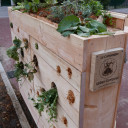
Le Compostier designs & builds systems for vermicomposting in the city. By offering smart, durable and tastefull designs for urban vermicomposting we hope to inspire city residents to take ownership of their own waste & neighbourhoods. The wormhotels are used by relatively small groups of neighbours & help build social cohesion in neighbourhoods, while turning waste into value for local food production. The produced vermicompost can be used by the participating neighbours, or can be donated to local urban farms & other green projects in the city. Thereby helping to green the city & stimulate food production in the city. Vermicompost has many advantages in comparison to other forms of fertilizers.
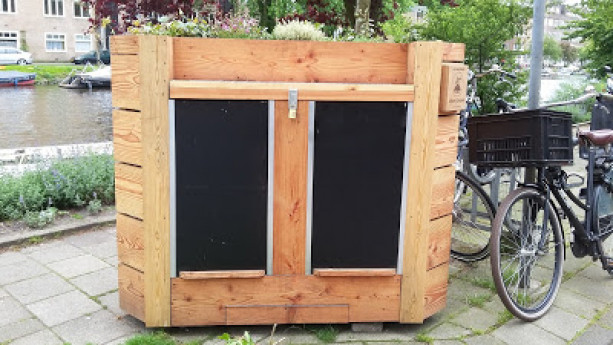
Le Compostier designs & builds systems for vermicomposting in the city.
By offering smart, durable and tastefull designs for urban vermicomposting we hope to inspire city residents to take ownership of their own waste & neighbourhoods.
The wormhotels are used by relatively small groups of neighbours & help build social cohesion in neighbourhoods, while turning waste into value for local food production.
The produced vermicompost can be used by the participating neighbours, or can be donated to local urban farms & other green projects in the city. Thereby helping to green the city & stimulate food production in the city.
Vermicompost has many advantages in comparison to other forms of fertilizers.
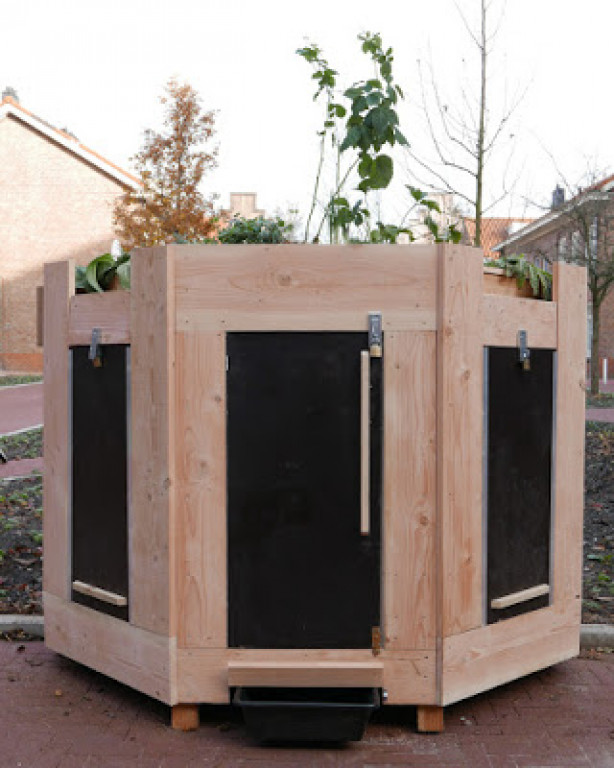
Smart Stories
Check the article about the worm hotels featured in our online magazine 'Smart Stories':
Rainbeer (Hemelswater)

Besides taking on the heavy rainfall problem (rainproofing the city) we focus on making our products and the producers we work with circular.
Circular Innovation Program - City of Amsterdam (Dutch)
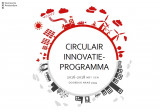
The Circular Innovation Program accelerates insights in the transition towards a circular economy.
Check the Circular Innovation Program (link)
First Zero Waste Lab in Netherlands

The Zero Waste Lab is an initiaitive of De Gezonde Stad (the Healthy City) and is supported by partners Stadsdeel Oost, Icova, Cities Foundation, de Regenboog Groep, Ymere and EY.
Besides, the Dapper Market, local entrepreneurs, the Dapper School and residents join.
Smart Stories
Check the article about the Zero Waste Lab featured in our online magazine 'Smart Stories':
RE-ORGANISE
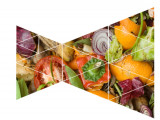
Re-organise organic waste streams to create a benefit for all
The Bio-based street bench : A sustainable cooperation between Waternet and NPSP

Using a biocomposite to make street benches
Biogasboot

Biodigesting a way into a sustainable future
Temporary Courthouse (Tijdelijke Rechtbank) Amsterdam

Building-as-a-product
Aquatic plants transform into bench

Can you sit on aquatic plants?
Scan for opportunities repair and recycling industry

Since repairing is better than disposing
If you want to receive the dutch report, please send me a message.
Circle City Scan of the City of Amsterdam
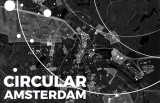
The City Circle Scan identifies those areas where the most significant, tangible progress in realizing a circular economy can be achieved.
Circular Buiksloterham
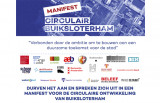
Buiksloterham, on the northern bank of the IJ waterway, once the site of Amsterdam’s most polluting industries, is being transformed into a sustainable area to live and work.
The living lab is described in the following report.
Want to know more about the status of Circular Buiksloterham after 5 years of innovation and pioneering?
Join us during the Event 'Circulair Buiksloterham, 5 jaar later' on the 26th of March in Pakhuis de Zwijger. The event will be in Dutch. Check <https://dezwijger.nl/programma/circulair-buiksloterham-5-jaar-later>
RECURF

RECURF focuses on the possibilities to process the new material combinations of bio-based plastics and textile residues in attractive circular products for interior and exterior uses
Dakdokters

The metropolis of the future has multifunctional roofscape that produces energy, harvests rainwater and food and is a place for recreation in nature.
The metropolis of the future has a multifunctional roofscape that produces energy, harvests rainwater and food and is a place for recreation in nature. In this way it forms a healthy shell over our city. Since 2010 De Dakdokters (The Roofdoctors) transform the roofs of Amsterdam. Let us show you some of our most interesting solutions and be inspired by our vision.
Partner
De Ceuvel

De Ceuvel is one of the most sustainable and unique urban developments in Europe.
Waste EcoSmart
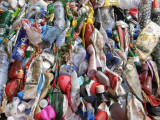
Strengthen and increase the innovation capacity of regional research-driven clusters in resource efficiency through cooperation, research and technological development within the waste sector.
Stay up to date
Get notified about new updates, opportunities or events that match your interests.

